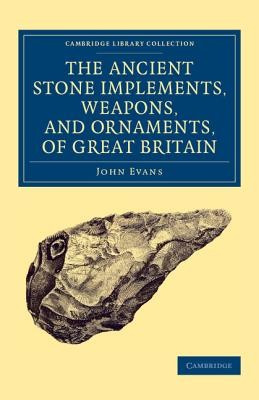
- We will send in 10–14 business days.
- Author: John Evans
- Publisher: Cambridge University Press
- ISBN-10: 1108081487
- ISBN-13: 9781108081481
- Format: 14 x 21.6 x 3.7 cm, minkšti viršeliai
- Language: English
- SAVE -10% with code: EXTRA
Ancient Stone Implements, Weapons, and Ornaments, of Great Britain (e-book) (used book) | bookbook.eu
Reviews
Description
Combining a very active career as a prosperous paper manufacturer with the pursuit of various antiquarian interests, Sir John Evans (1823-1908) began the study of geology in the context of a court case over water rights for his paper mills, but extended his interests to the artefacts found in gravel beds in Britain, and in the Somme valley in France. This work was published in 1872, and was translated into French soon afterwards. Heavily illustrated, it describes stone implements from the Palaeolithic and Neolithic periods, including weapons, tools and ornaments, from cave and river-bed deposits as well as settlement sites. Evans also continued to research fossils, and was highly respected as a numismatist. He was a fellow of the Royal Society, the Geological Society, and the Society of Antiquaries. His son Arthur Evans (1851-1941) discovered the Minoan civilisation of Crete.
EXTRA 10 % discount with code: EXTRA
The promotion ends in 22d.02:25:07
The discount code is valid when purchasing from 10 €. Discounts do not stack.
- Author: John Evans
- Publisher: Cambridge University Press
- ISBN-10: 1108081487
- ISBN-13: 9781108081481
- Format: 14 x 21.6 x 3.7 cm, minkšti viršeliai
- Language: English English
Combining a very active career as a prosperous paper manufacturer with the pursuit of various antiquarian interests, Sir John Evans (1823-1908) began the study of geology in the context of a court case over water rights for his paper mills, but extended his interests to the artefacts found in gravel beds in Britain, and in the Somme valley in France. This work was published in 1872, and was translated into French soon afterwards. Heavily illustrated, it describes stone implements from the Palaeolithic and Neolithic periods, including weapons, tools and ornaments, from cave and river-bed deposits as well as settlement sites. Evans also continued to research fossils, and was highly respected as a numismatist. He was a fellow of the Royal Society, the Geological Society, and the Society of Antiquaries. His son Arthur Evans (1851-1941) discovered the Minoan civilisation of Crete.


Reviews